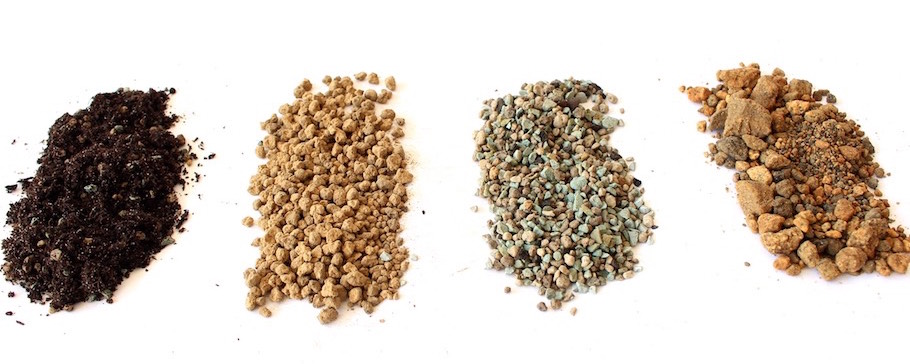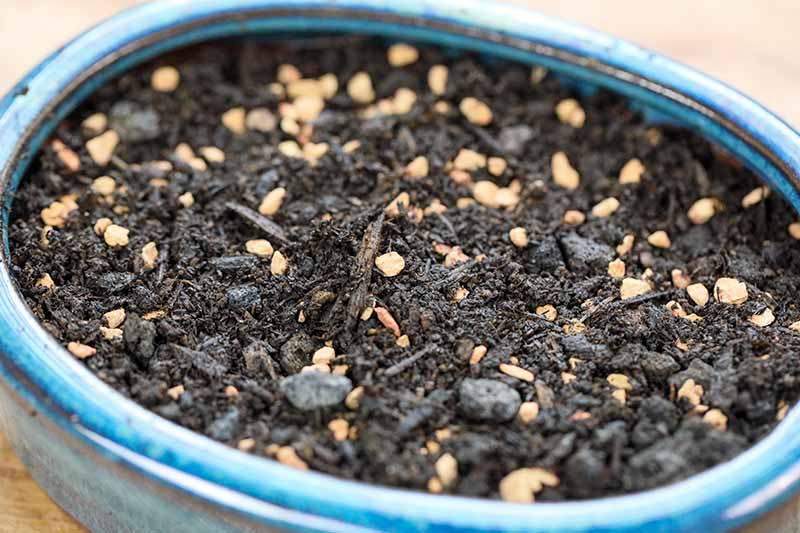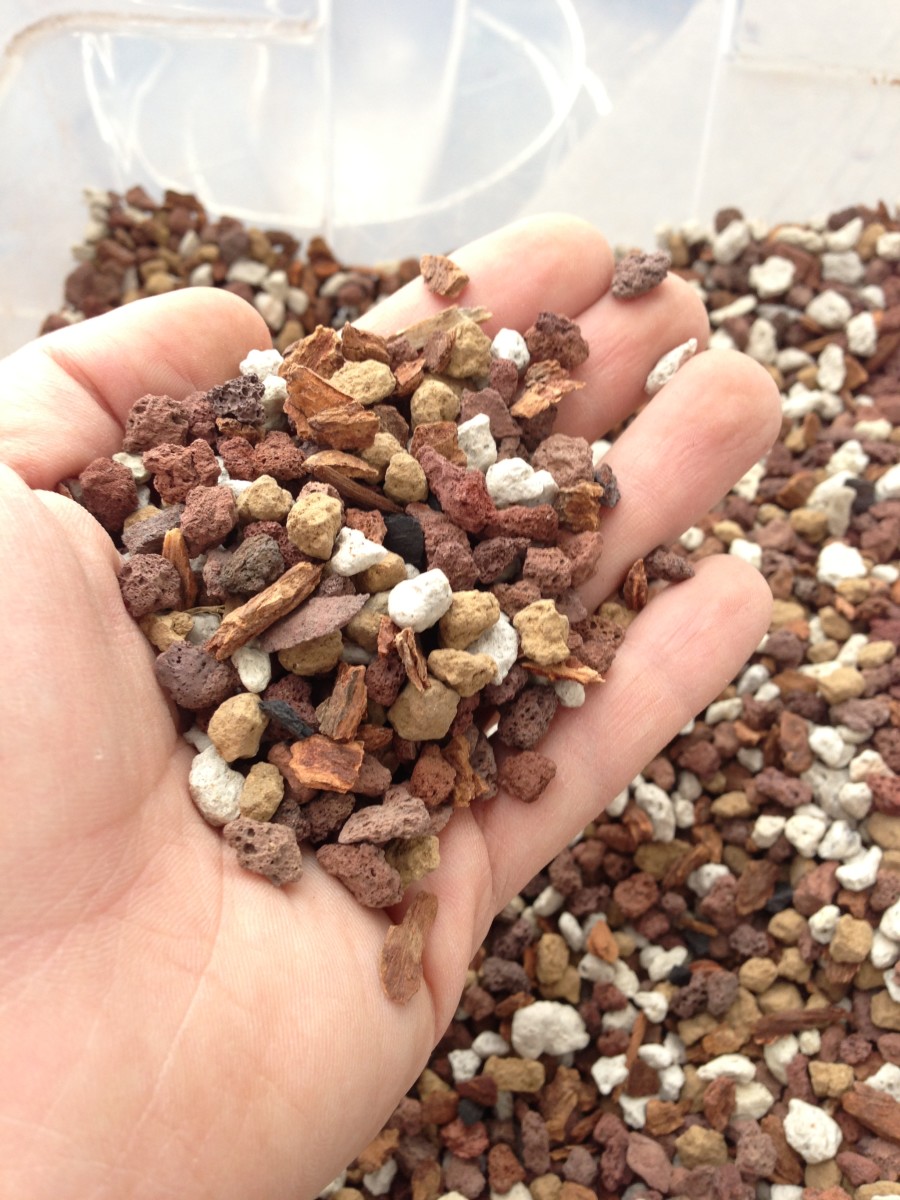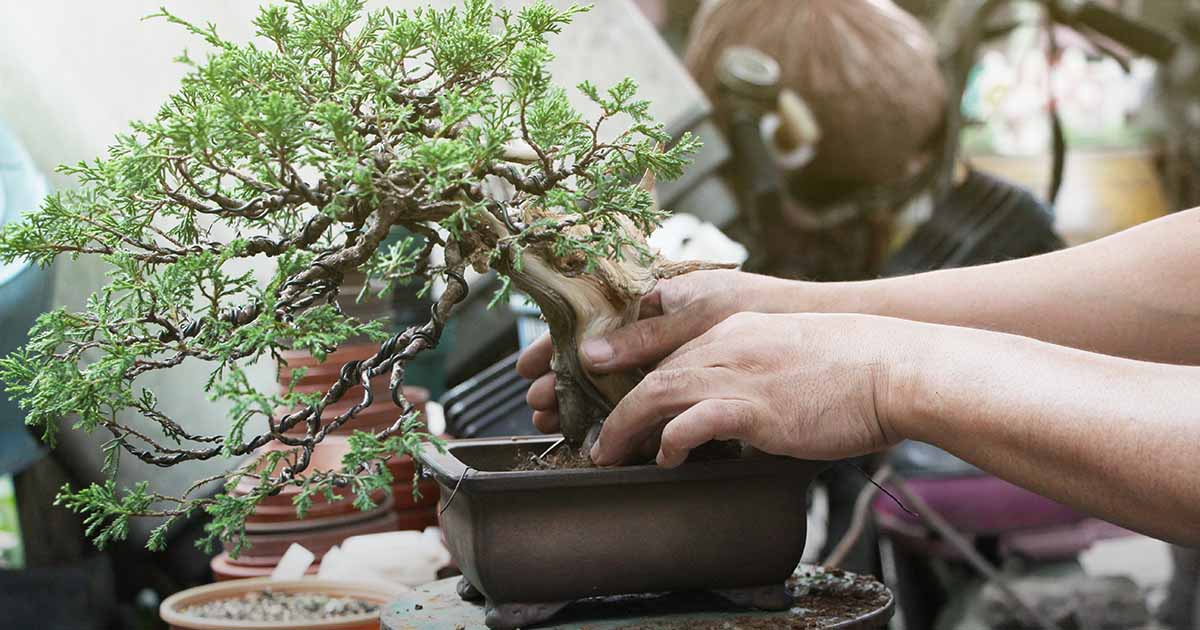In the following paragraphs, we'll explore the differing types of soil and substrates Utilized in bonsai cultivation, like natural and inorganic solutions.
We will also learn advisable soil mixtures for a variety of bonsai species, like deciduous, coniferous, and indoor versions. From akadama and pumice to moss and river sand, we will dive to the intriguing world of bonsai soil and assist you to realize why It truly is an essential Element of cultivating these exquisite trees.

Bonsai soil
What is bonsai soil?
Bonsai soil is a specialized type of soil that is specifically formulated for growing and maintaining bonsai trees. Unlike regular garden soil, bonsai soil is well-draining and provides the necessary nutrients and moisture balance for the tree's root system. The composition of bonsai soil is carefully designed to meet the unique needs of bonsai trees, ensuring their health and longevity.
The importance of bonsai soil
The choice of soil plays a crucial role in the success of your bonsai tree. The right soil provides optimal drainage, allowing excess water to flow freely and preventing root rot. It also promotes a healthy and well-developed root system, which is essential for the overall health and growth of the tree. Bonsai soil retains moisture while allowing air to reach the roots, striking the perfect balance for the tree's needs. Choosing the right bonsai soil is essential for maintaining a healthy and thriving bonsai tree.
Bonsai substrates
What are bonsai substrates?
Bonsai substrates refer to the different materials that can be used to create the ideal soil composition for bonsai trees. These substrates are carefully chosen to meet the specific needs of different species of bonsai trees and to ensure proper water drainage and nutrient availability.
Different types of bonsai substrates
There are various types of bonsai substrates available, each with its own unique characteristics and benefits. Some common bonsai substrates include:
- Organic materials: These include ingredients such as bark, peat moss, and coconut coir. Organic substrates help retain moisture and provide essential nutrients to the bonsai tree.
- Inorganic products: These contain factors like pumice, lava rock, and akadama. Inorganic substrates supply fantastic drainage, making certain that surplus water will not accumulate within the roots from the bonsai tree.
- Soil amendments: These are typically substances that happen to be extra to the soil mixture to reinforce its Attributes. Samples of soil amendments include perlite, vermiculite, and sand. They improve the soil's aeration, drinking water-Keeping capacity, and nutrient availability.
By comprehension the differing types of bonsai substrates and their Homes, you could choose the best suited a person to your bonsai tree's requires.
Organic and natural or Inorganic Soils
Natural and organic soils for bonsai
Organic soils for bonsai are composed of normal elements which include bark, peat moss, coconut coir, and compost. These supplies supply a wealthy source of nutrients for that bonsai tree and endorse healthy root improvement. Natural soils also have very good h2o retention Attributes, making sure which the tree gets adequate humidity between watering sessions. Nevertheless, it is important to notice that organic and natural soils may well stop working eventually and develop into compacted, bringing about poor drainage and potential root problems.
Inorganic soils for bonsai
Inorganic soils for bonsai consist of components like pumice, lava rock, akadama, and soil amendments like perlite or vermiculite. These elements have outstanding drainage properties, stopping waterlogged soil and advertising aeration throughout the roots. Inorganic soils are desired by quite a few bonsai lovers due to their longevity and ability to provide a secure ecosystem with the bonsai tree's root procedure. Having said that, They could call for far more Regular watering and extra fertilization, as they don't hold just as much dampness or nutrients as natural soils.
Advantages and drawbacks of applying organic and inorganic soils for bonsai
Choosing between natural and organic and inorganic soils to your bonsai tree relies on several elements, including the particular species of tree, your climate, and private preferences. Listed here are the pluses and minuses of each:
Natural and organic soils:
- Execs: Give nutrients, superior drinking water retention, encourage nutritious root progress.
- Drawbacks: May break down over time, potential for inadequate drainage Otherwise thoroughly managed.
Inorganic soils:
- Professionals: Great drainage, extensive-lasting, stable ecosystem for roots.
- Cons: A lot less water retention, may call for more Repeated watering and fertilization.
By looking at the advantages and disadvantages of both natural and organic and inorganic soils, you can make an informed determination based upon the precise requires of the bonsai tree.
Soil parts
Vital elements of bonsai soil
Bonsai soil is often made up of a few most important elements: grit, organic matter, and clay. These parts get the job done alongside one another to create the ideal soil composition for that bonsai tree's root technique.
- Grit: Grit, for example sand or perlite, provides drainage and aeration in the soil. It helps stop waterlogging and will allow air to get to the roots.
- Organic and natural matter: Organic issue, like compost or bark, supplies nutrients to your bonsai tree. What's more, it assists keep humidity and Increase the soil's In general structure.
- Clay: Clay particles deliver some h2o retention traits and support bind the soil together. Having said that, far too much clay can result in poor drainage and compaction.
Role of each and every soil element
Each and every soil part performs a significant function in making a properly-balanced and wholesome natural environment for your bonsai tree's roots.
- Grit: Grit provides the required drainage and aeration inside the soil. It stops the roots from sitting down in stagnant h2o, decreasing the chance of root rot and selling All round root wellness.
- Organic make any difference: Organic and natural issue gives essential nutrients into the bonsai tree. It aids in dampness retention and contributes to the overall composition on the soil.
- Clay: Clay particles enable bind the soil together and supply some h2o retention ability. Having said that, it is vital to stability the amount of clay to stay away from problems like inadequate drainage and compaction.
By comprehending the roles of each and every soil part, you could produce a balanced bonsai soil mix that satisfies the particular requirements of the tree.

Recommended Bonsai soil mixtures
Common bonsai soil mixtures
There are several common bonsai soil mixtures that have been proven effective for various types of bonsai trees. These mixtures typically consist of a combination of inorganic substrates, organic matter, and soil amendments.
Some of the commonly used bonsai soil mixtures include:
- Akadama, pumice, and lava rock: This mixture is popular among bonsai enthusiasts for its excellent drainage and water retention properties.
- Akadama, lava rock, and natural make any difference: This combination combines the many benefits of inorganic substrates With all the nutrient-rich Homes of organic and natural make any difference.
- Pumice, perlite, and bark: This mixture provides fantastic drainage and aeration though retaining some dampness and providing nutrients.
These are typically just a couple samples of bonsai soil mixtures, and the ideal mixture will rely upon the specific requirements of one's bonsai tree and also your local weather.
Things to contemplate when selecting a bonsai soil mixture
When picking out a bonsai soil mixture, it is vital to think about the subsequent elements:
- Species of bonsai tree: Different species have diverse dampness and nutrient needs. Investigation the particular requires of the tree to choose a soil mixture that fulfills its prerequisites.
- Local weather: The weather you reside in can have an affect on the humidity retention properties of your soil. Evaluate the ordinary humidity and temperature in your town when choosing a soil mixture.
- Watering behaviors: Your personal watering habits and routine need to align with the soil mixture you choose. Some mixtures involve a lot more Repeated watering, while some retain moisture for longer periods.
- Spending plan: Some soil factors can be more expensive than Some others. Take into account your budget when deciding on a soil combination.
By getting these things into account, you'll be able to go with a bonsai soil combination that provides the top escalating conditions on your tree.
Deciduous Bonsai soil
Most effective soil composition for deciduous bonsai
Deciduous bonsai trees, like maple or birch, have distinct soil requirements to guidance their advancement and overall health. The most effective soil composition for deciduous bonsai ordinarily includes a combination of organic issue, inorganic substrates, and soil amendments.
A advisable soil composition for deciduous bonsai may well include things like:
- Akadama: Supplies fantastic h2o retention while permitting for drainage. In addition, it releases nutrients little by little over time.
- Pumice: Promotes aeration and drainage in the soil, avoiding waterlogging.
- Bark or peat moss: Provides natural and organic make any difference towards the soil, supplying nutrients and moisture retention.
This soil composition ensures that the roots of deciduous bonsai trees get the right balance of moisture, nutrients, and oxygen for exceptional advancement.

Coniferous and Pine soil
Ideal soil mixture for coniferous and pine bonsai
Coniferous and pine bonsai trees have specific Organic or Inorganic Bonsai Soils soil requirements due to their water retention needs and preference for acidic soil. An ideal soil mixture for coniferous and pine bonsai should provide good drainage while retaining moisture and maintaining the desired pH level.
A recommended soil mixture for coniferous and pine bonsai may include:
- Akadama: Provides excellent water retention while allowing for sufficient drainage. It releases nutrients slowly over time.
- Pumice: Encourages aeration and drainage during the soil, blocking waterlogged roots.
- Peat moss: Provides natural and organic issue and acidity into the soil, making a really perfect pH stage for coniferous and pine trees.
This soil mixture makes sure that the roots of coniferous and pine bonsai trees get the appropriate balance of moisture, nutrients, and acidity for his or her particular demands.
Akadama
What's akadama?
Akadama is a sort of clay soil which is widely Employed in bonsai cultivation. It is actually recognized for its superb h2o retention Houses, which assure a gradual supply of dampness for the bonsai tree's roots. Akadama is also prized for its capability to release nutrients slowly but surely with time, offering a consistent source of nourishment to the tree.
Great things about using akadama in bonsai soil
Applying akadama in bonsai soil presents numerous Added benefits:
- Drinking water retention: Akadama has Extraordinary h2o retention properties, allowing it to carry dampness with no getting waterlogged. This ensures that the bonsai tree's roots get a regular provide of water, promoting nutritious advancement.
- Nutrient release: Akadama gradually releases nutrients in to the soil as time passes, supplying a dependable supply of nourishment for your bonsai tree. This cuts down the need for frequent fertilization and allows sustain a balanced nutrient profile.
- Aeration: Inspite of its h2o retention abilities, akadama also supplies suitable aeration into the bonsai tree's roots. It will allow air to get to the root technique, preventing challenges including root rot due to insufficient oxygen.
By incorporating akadama in to the bonsai soil, you can create an exceptional developing environment for the tree, guaranteeing its well being and vitality.

Lava rock
How lava rock benefits bonsai soil
Lava rock is a popular component in bonsai soil mixtures due to its excellent drainage and aeration properties. It is typically used in conjunction with other substrates to create the ideal soil composition for bonsai trees.
The benefits of lava rock in bonsai soil include:
- Drainage: Lava rock provides excellent drainage, preventing waterlogging and ensuring that excess water flows freely through the soil. This helps prevent root rot and provides a healthy environment for the roots to thrive.
- Aeration: The porous mother nature of lava rock will allow air to flow into within the soil, giving oxygen towards the bonsai tree's root process. Correct aeration is vital for nutritious root enhancement and overall tree growth.
- Longevity: Lava rock is actually a tough material that does not stop working simply. This ensures that the soil construction stays steady over time, minimizing the necessity for Repeated soil replacements.
Lava rock is offered in numerous dimensions and shapes, allowing for for personalisation determined by the specific wants of your respective bonsai tree and soil prerequisites.
Different types of lava rock
You'll find differing kinds of lava rock that can be used in bonsai soil mixtures, including:
- Black lava rock: Black lava rock is often a commonly employed material in bonsai soil mixtures. It offers outstanding drainage Homes and adds an aesthetic element to the general presentation of your bonsai tree.
- Pink lava rock: Red lava rock is another well-known alternative in bonsai soil mixtures. It offers identical drainage and aeration Rewards as black lava rock but has a distinct reddish colour that adds Visible interest towards the container.
Both of those black and purple lava rocks are commonly out there and might be very easily integrated into your bonsai soil mixture.
Potting
Necessary tricks for thriving bonsai potting
Potting is actually a significant process in bonsai cultivation, because it immediately impacts the well being and enhancement of your tree's roots. Here are several vital tips for productive bonsai potting:
- Choose the proper pot measurement: Pick a bonsai pot which allows for root progress even though even now offering a cosy match. Prevent pots that are also big, since they can lead to excessive soil humidity and weak root development.
- Use bonsai wire: Protected the tree during the pot making use of bonsai wire to ensure security. This stops the tree from shifting or becoming uprooted for the duration of watering or solid winds.
- Trim and distribute the roots: Right before potting the bonsai tree, diligently trim and spread out the roots. This encourages outward progress and helps prevent root tangling or root-certain problems.
- Include mesh screens: Put mesh screens more than the drainage holes at the bottom of your pot to avoid soil erosion and assure appropriate drainage.
- Use contemporary bonsai soil: When potting, always use refreshing bonsai soil to deliver the necessary nutrients and ideal developing ailments for your roots.
By adhering to these necessary tips, you can ensure An effective potting course of action and market the overall well being and development within your bonsai tree.
The position of bonsai pots in soil humidity Management
Bonsai pots Participate in a vital function in soil moisture control, directly impacting the wellness and progress of the tree. Bonsai pots are usually shallow and have drainage holes, making it possible for extra drinking water to escape and protecting against the soil from getting waterlogged.
The look of bonsai pots encourages evaporation and air circulation, which aids regulate soil humidity levels. The shallow depth and huge opening in the pot expose extra surface place of the soil into the air, aiding in dampness evaporation. This prevents the roots from sitting in excessively soaked soil, cutting down the chance of root rot as well as other drinking water-linked problems.
On top of that, the drainage holes in bonsai pots permit any surplus h2o to flee, blocking waterlogged soil and marketing aeration around the roots. Good aeration is essential for the health and improvement of the root technique, ensuring the bonsai tree gets the mandatory oxygen for development.
Through the use of bonsai pots suitable for effective dampness control, you could develop a good setting in your bonsai tree's roots and boost its Total overall health and vitality.
In Deciduous Bonsai soil conclusion, choosing the correct bonsai soil is important to the achievements and health of one's bonsai tree. Knowledge the differing types of bonsai substrates, the role of organic and natural and inorganic soils, the key components of bonsai soil, and the various recommended soil mixtures can help you provide the best escalating disorders for the bonsai tree. No matter if there is a deciduous or coniferous bonsai, incorporating materials like akadama and lava rock can greatly enhance the soil's drainage and nutrient availability. In addition, paying attention to potting methods and utilizing bonsai pots designed for moisture control will additional help the flourishing progress of your bonsai tree. With correct being familiar with and implementation of bonsai soil methods, you could enjoy the elegance and artistry of bonsai cultivation For several years to return.
